Trade policy. Barriers. International Economic Relation Topic 3

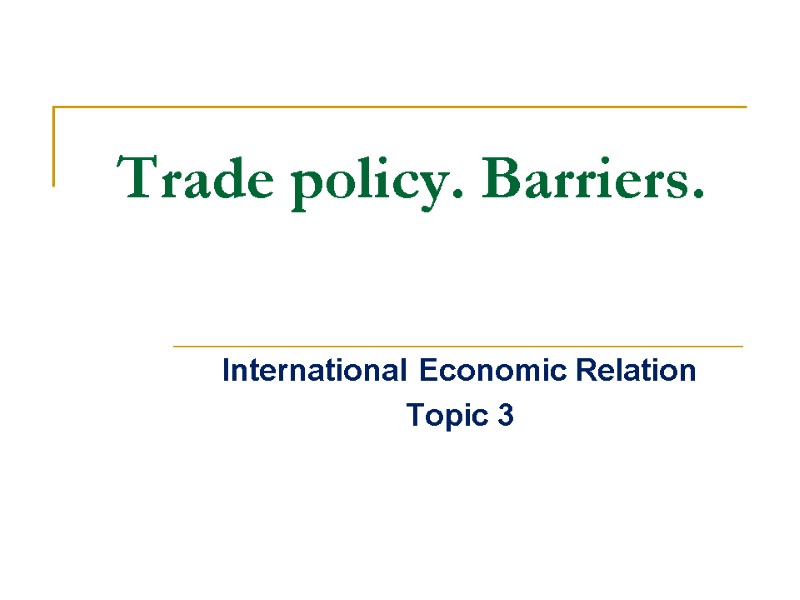
Trade policy. Barriers. International Economic Relation Topic 3
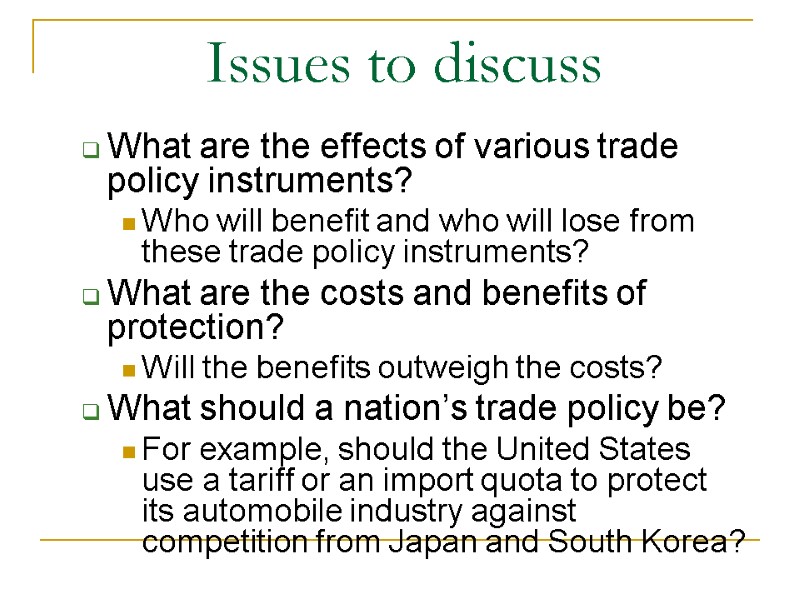
Issues to discuss What are the effects of various trade policy instruments? Who will benefit and who will lose from these trade policy instruments? What are the costs and benefits of protection? Will the benefits outweigh the costs? What should a nation’s trade policy be? For example, should the United States use a tariff or an import quota to protect its automobile industry against competition from Japan and South Korea?
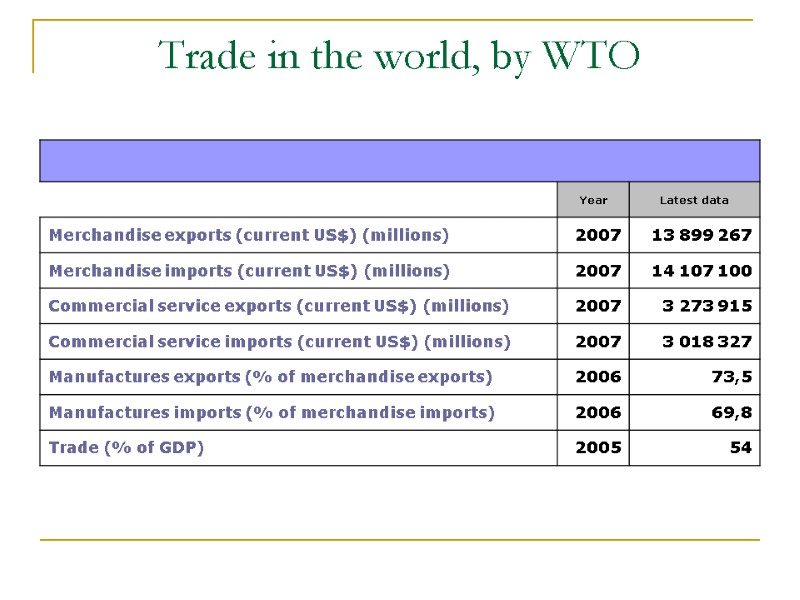
Trade in the world, by WTO
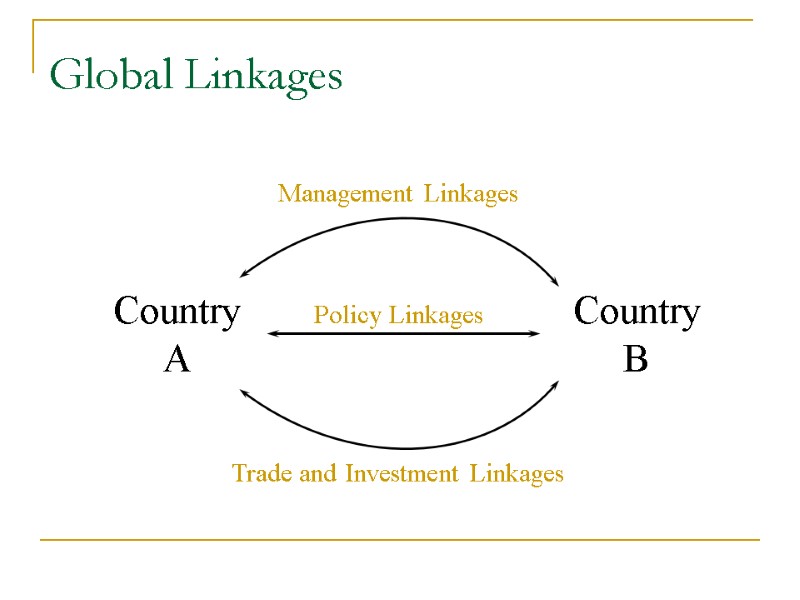
Global Linkages Country A Country B Management Linkages Policy Linkages Trade and Investment Linkages
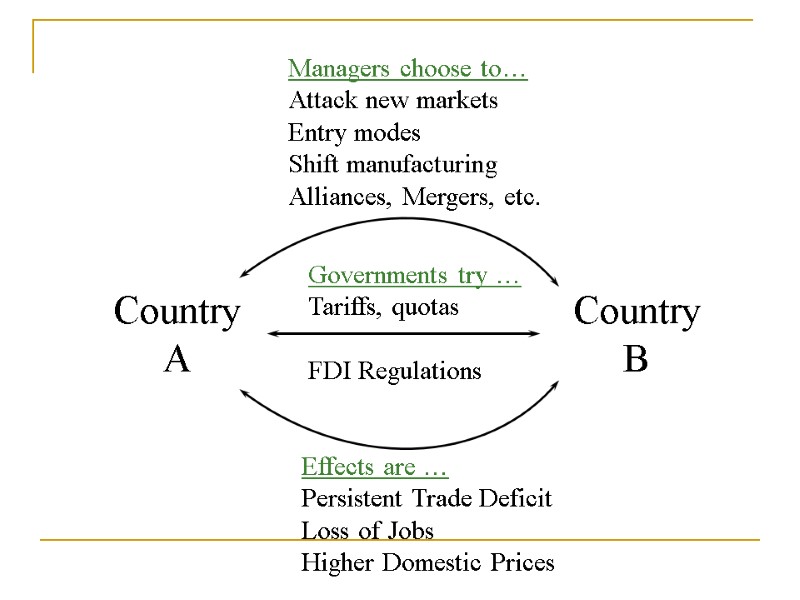
Country A Country B Managers choose to… Attack new markets Entry modes Shift manufacturing Alliances, Mergers, etc. Governments try … Tariffs, quotas FDI Regulations Effects are … Persistent Trade Deficit Loss of Jobs Higher Domestic Prices
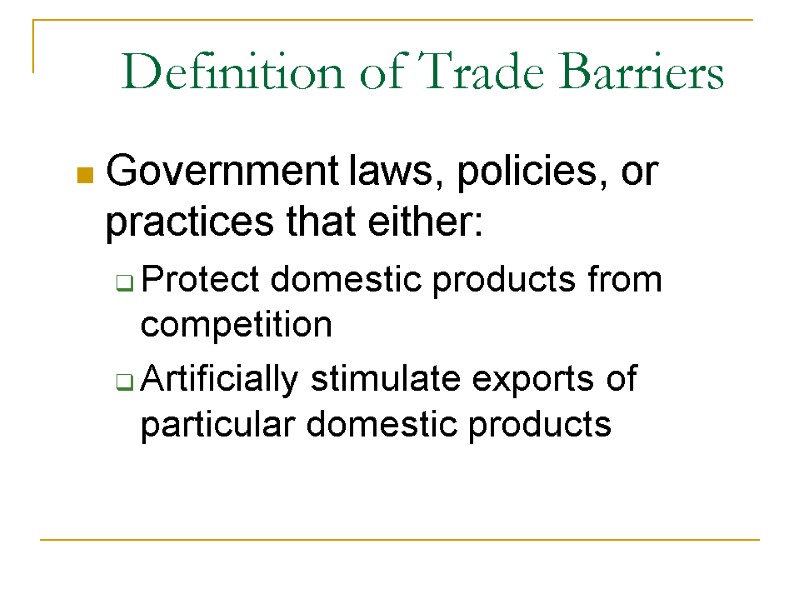
Definition of Trade Barriers Government laws, policies, or practices that either: Protect domestic products from competition Artificially stimulate exports of particular domestic products
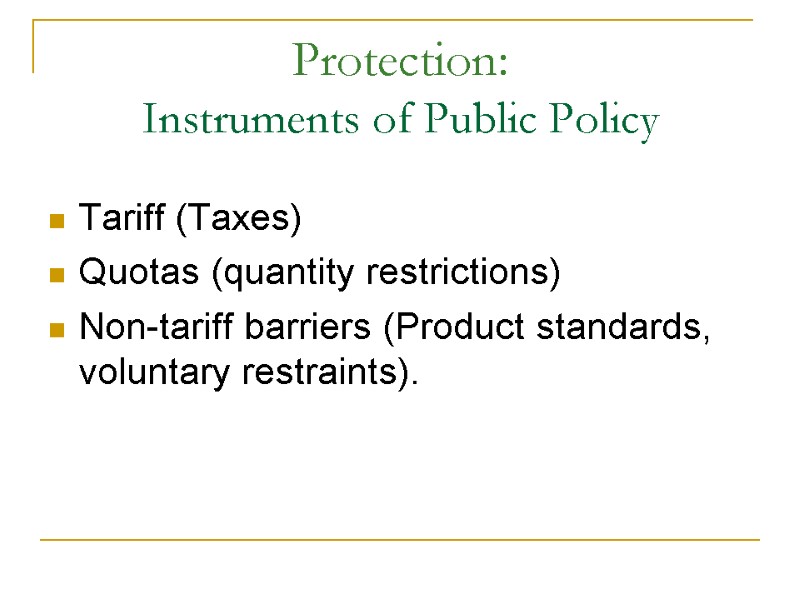
Protection: Instruments of Public Policy Tariff (Taxes) Quotas (quantity restrictions) Non-tariff barriers (Product standards, voluntary restraints).
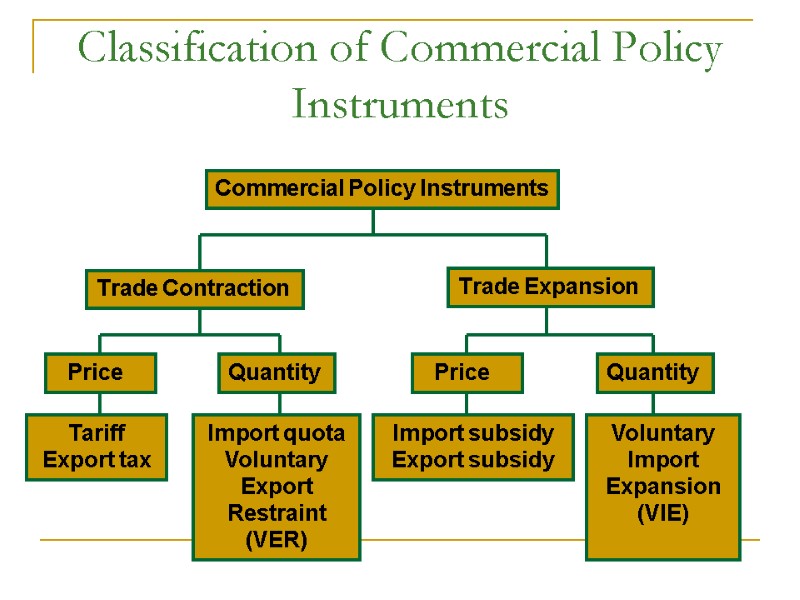
Classification of Commercial Policy Instruments Commercial Policy Instruments
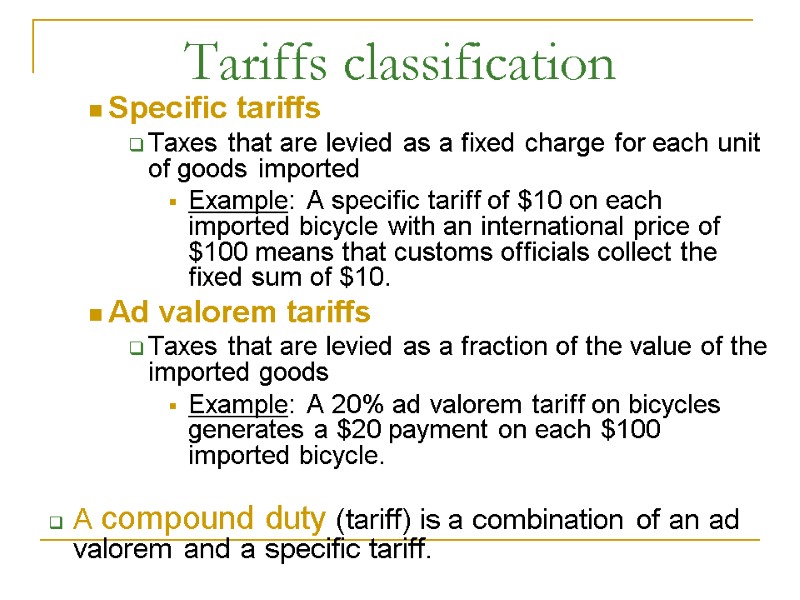
Tariffs classification Specific tariffs Taxes that are levied as a fixed charge for each unit of goods imported Example: A specific tariff of $10 on each imported bicycle with an international price of $100 means that customs officials collect the fixed sum of $10. Ad valorem tariffs Taxes that are levied as a fraction of the value of the imported goods Example: A 20% ad valorem tariff on bicycles generates a $20 payment on each $100 imported bicycle. A compound duty (tariff) is a combination of an ad valorem and a specific tariff.
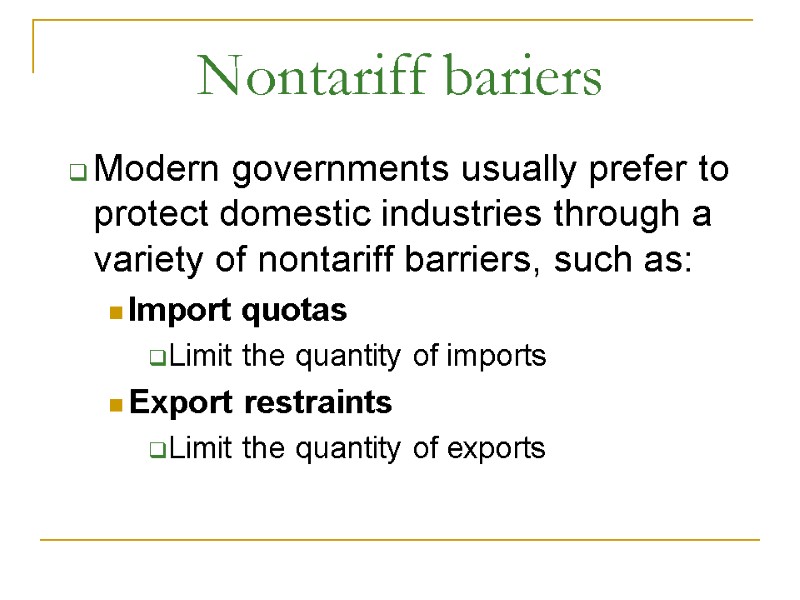
Modern governments usually prefer to protect domestic industries through a variety of nontariff barriers, such as: Import quotas Limit the quantity of imports Export restraints Limit the quantity of exports Nontariff bariers
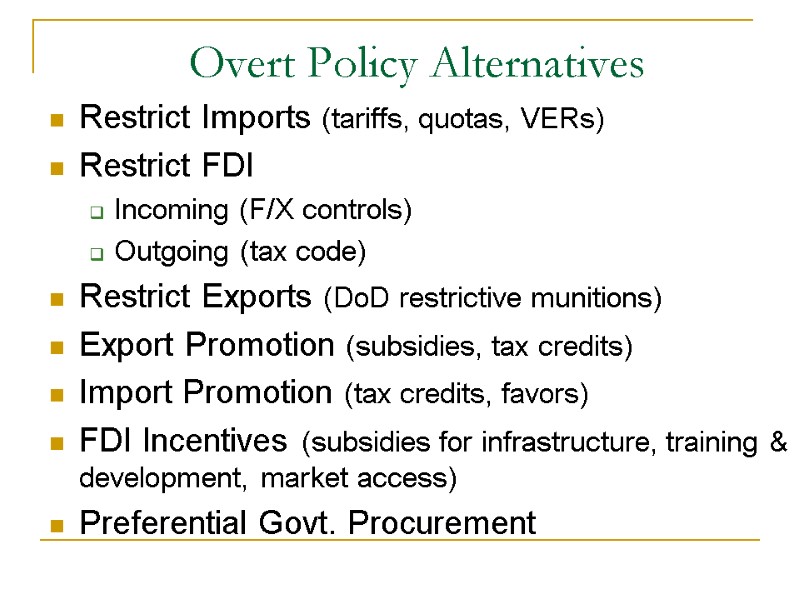
Overt Policy Alternatives Restrict Imports (tariffs, quotas, VERs) Restrict FDI Incoming (F/X controls) Outgoing (tax code) Restrict Exports (DoD restrictive munitions) Export Promotion (subsidies, tax credits) Import Promotion (tax credits, favors) FDI Incentives (subsidies for infrastructure, training & development, market access) Preferential Govt. Procurement
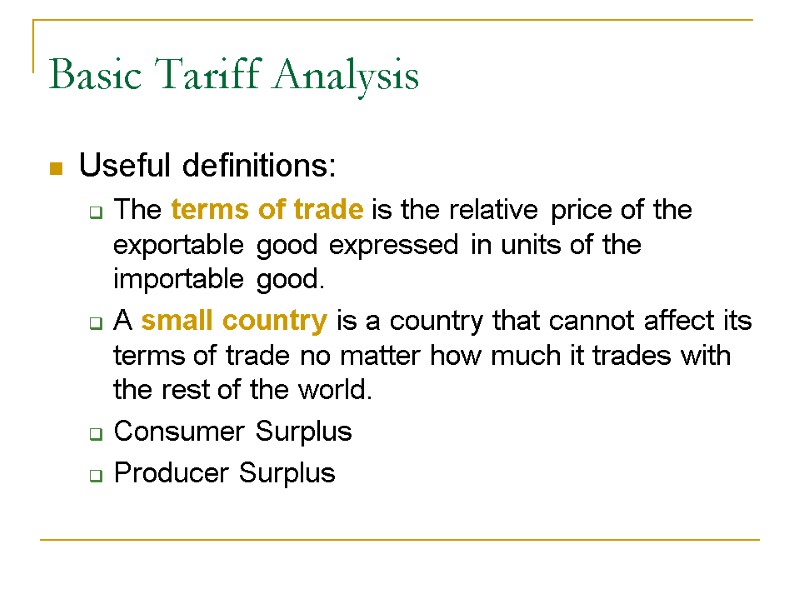
Useful definitions: The terms of trade is the relative price of the exportable good expressed in units of the importable good. A small country is a country that cannot affect its terms of trade no matter how much it trades with the rest of the world. Consumer Surplus Producer Surplus Basic Tariff Analysis
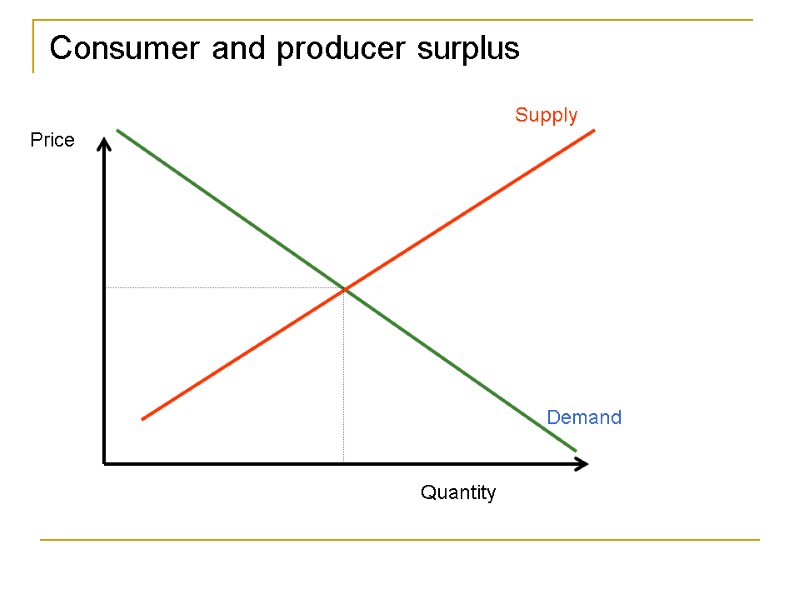
Consumer and producer surplus Supply Demand Quantity Price
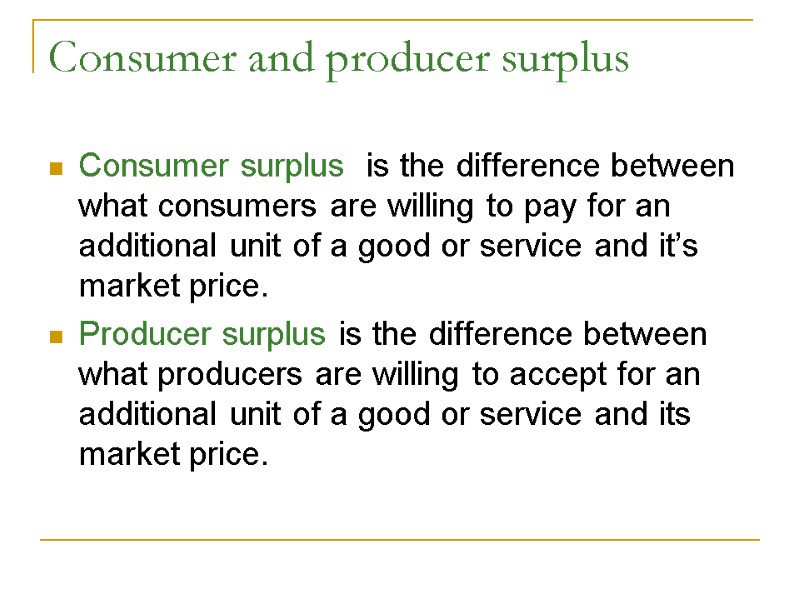
Consumer and producer surplus Consumer surplus is the difference between what consumers are willing to pay for an additional unit of a good or service and it’s market price. Producer surplus is the difference between what producers are willing to accept for an additional unit of a good or service and its market price.
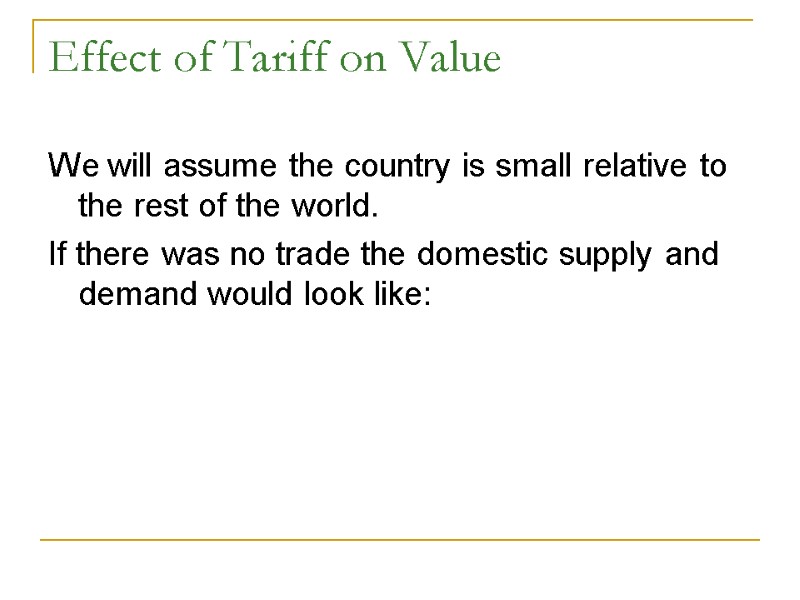
Effect of Tariff on Value We will assume the country is small relative to the rest of the world. If there was no trade the domestic supply and demand would look like:
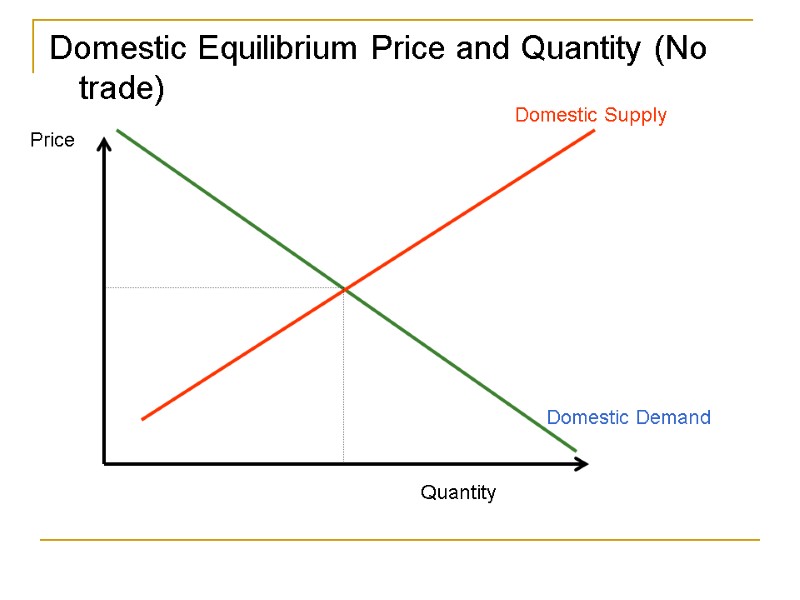
Domestic Equilibrium Price and Quantity (No trade) Domestic Supply Domestic Demand Quantity Price
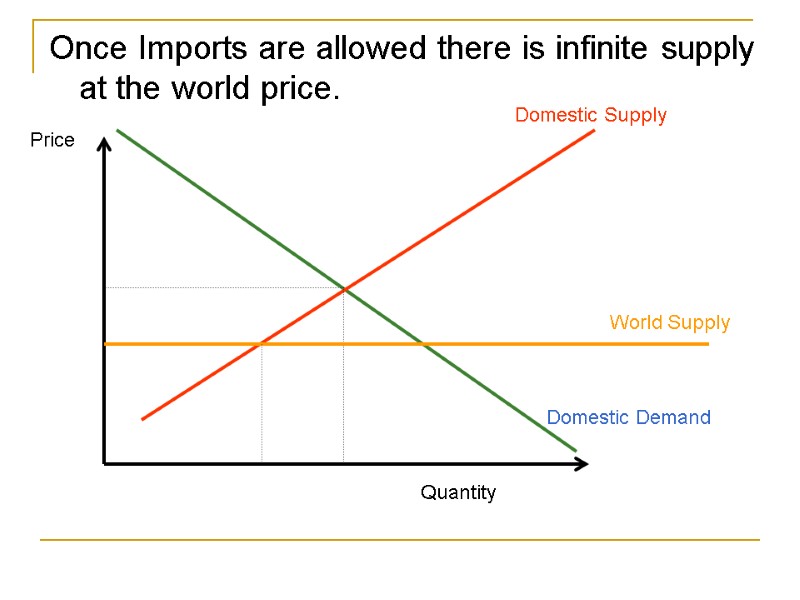
Once Imports are allowed there is infinite supply at the world price. Domestic Supply Domestic Demand Quantity Price World Supply
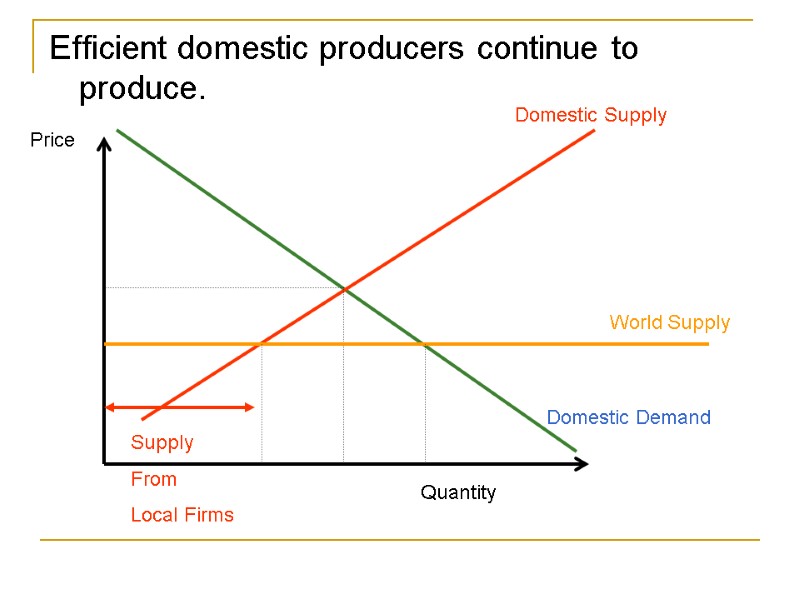
Efficient domestic producers continue to produce. Domestic Supply Domestic Demand Quantity Price World Supply Supply From Local Firms
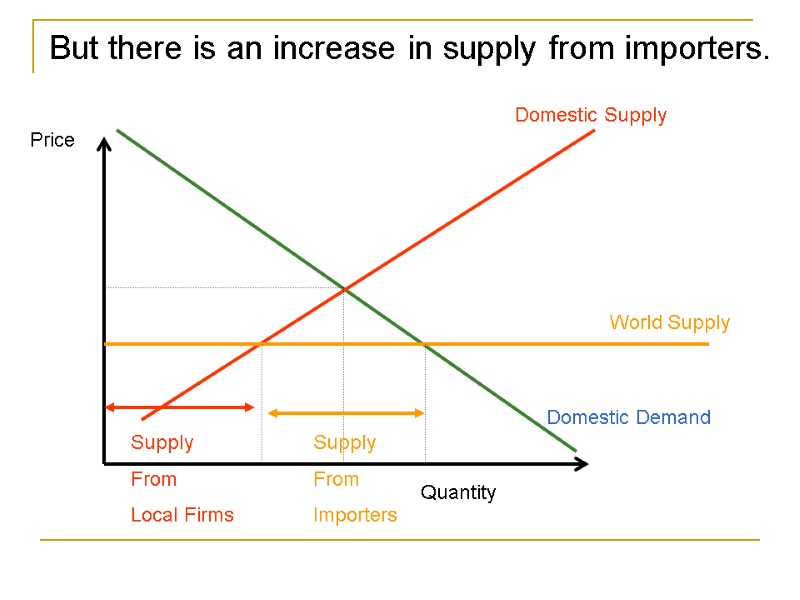
But there is an increase in supply from importers. Domestic Supply Domestic Demand Quantity Price World Supply Supply From Local Firms Supply From Importers
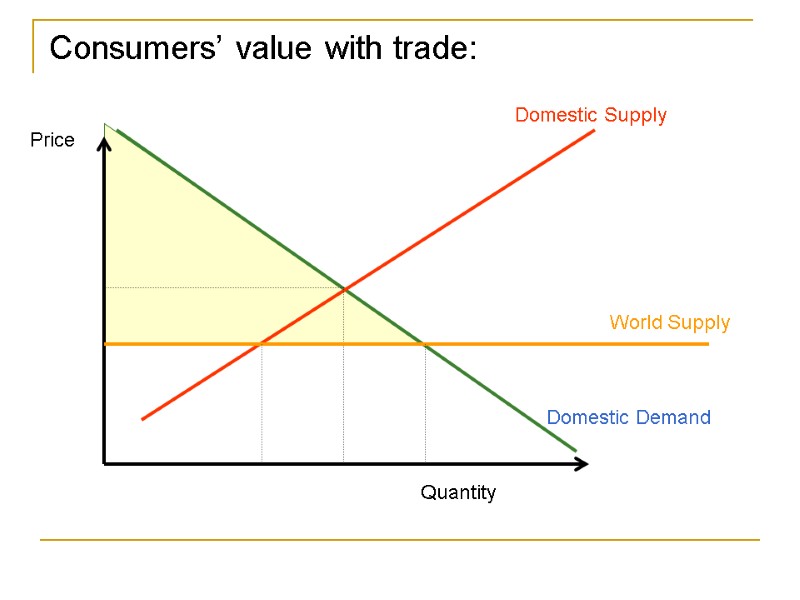
Consumers’ value with trade: Domestic Supply Domestic Demand Quantity Price World Supply
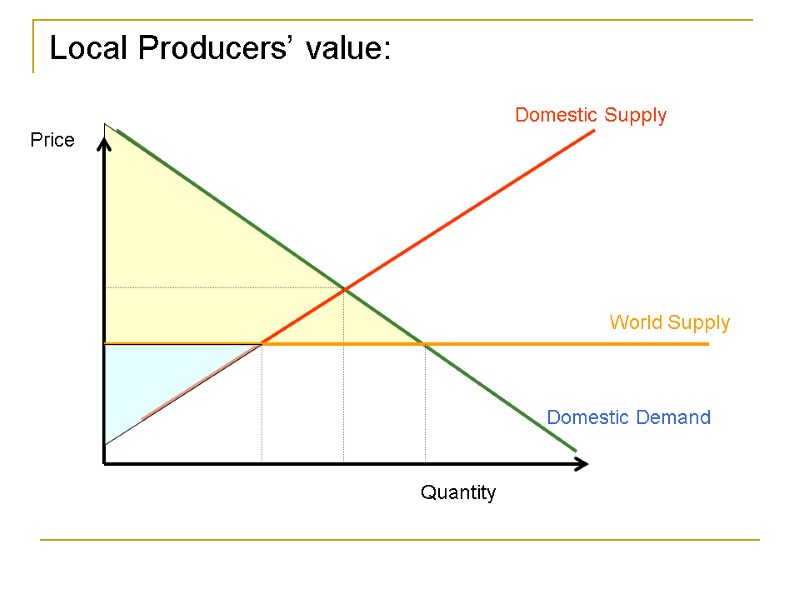
Local Producers’ value: Domestic Supply Domestic Demand Quantity Price World Supply
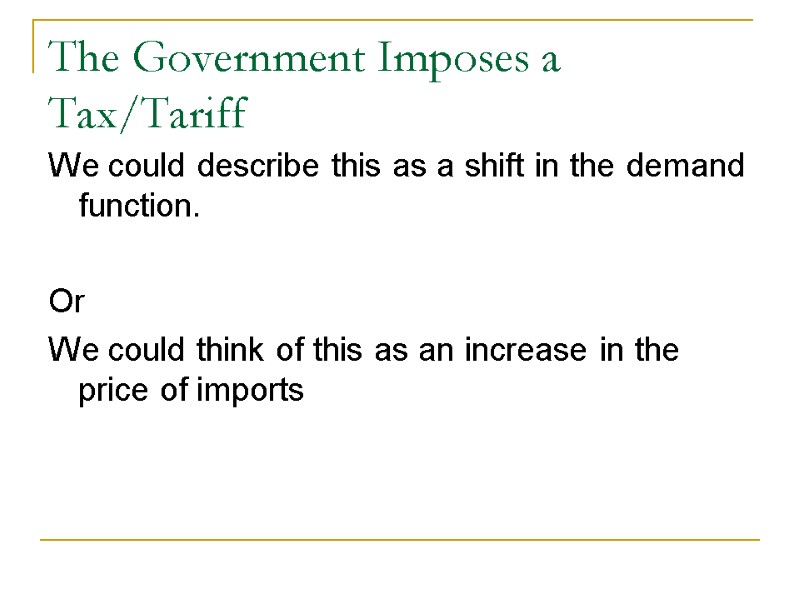
The Government Imposes a Tax/Tariff We could describe this as a shift in the demand function. Or We could think of this as an increase in the price of imports
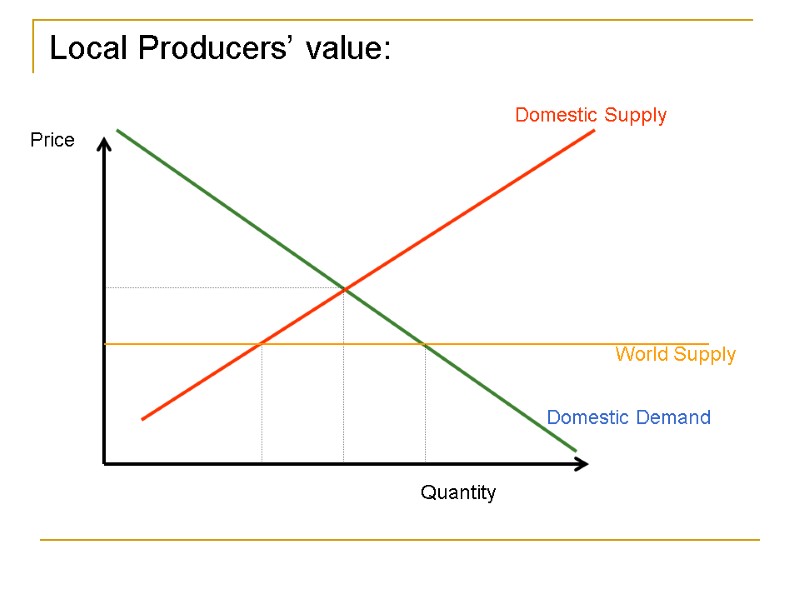
Local Producers’ value: Domestic Supply Domestic Demand Quantity Price World Supply
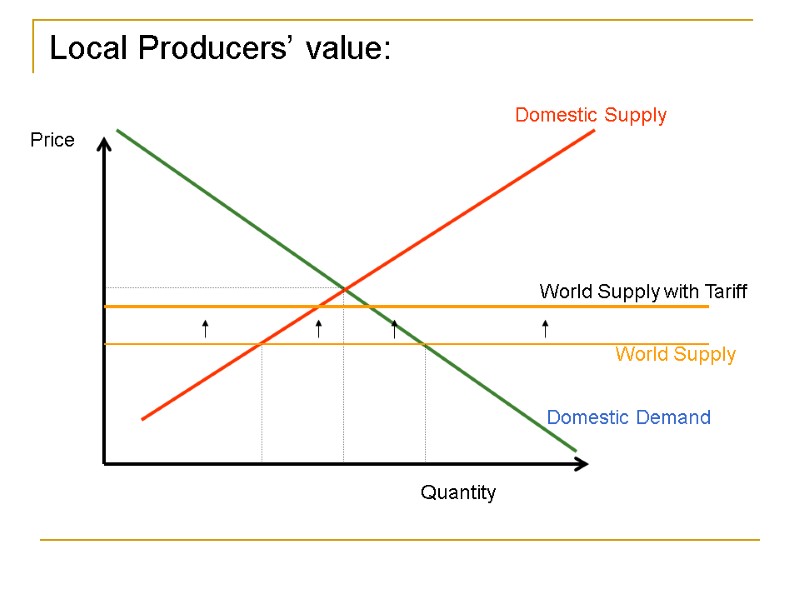
Local Producers’ value: Domestic Supply Domestic Demand Quantity Price World Supply World Supply with Tariff
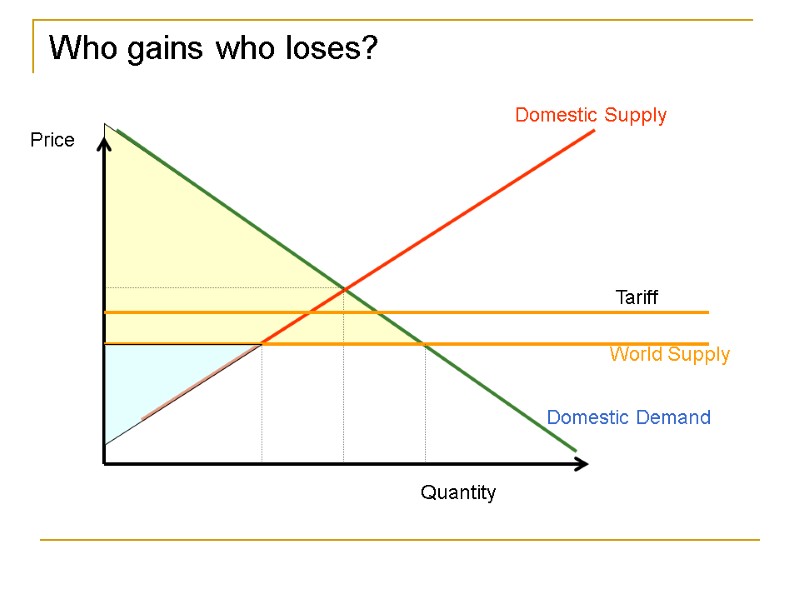
Who gains who loses? Domestic Supply Domestic Demand Quantity Price World Supply Tariff
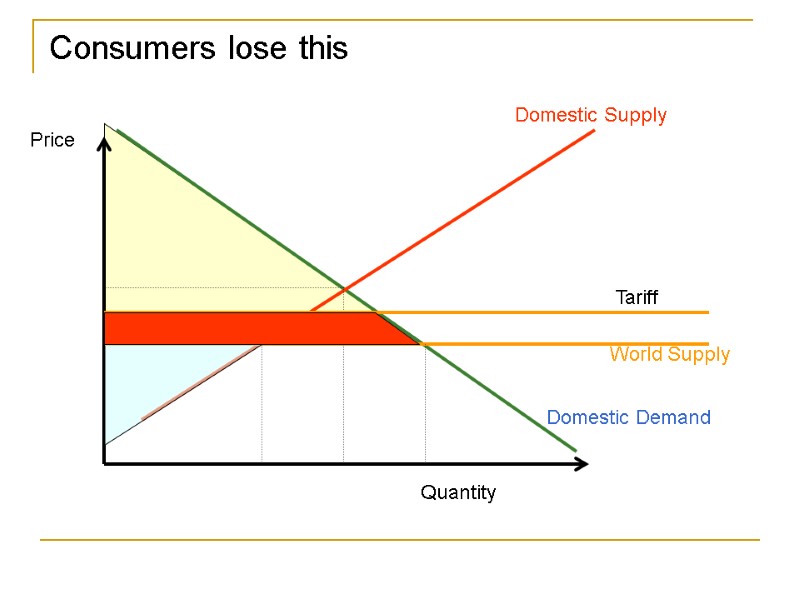
Consumers lose this Domestic Supply Domestic Demand Quantity Price World Supply Tariff
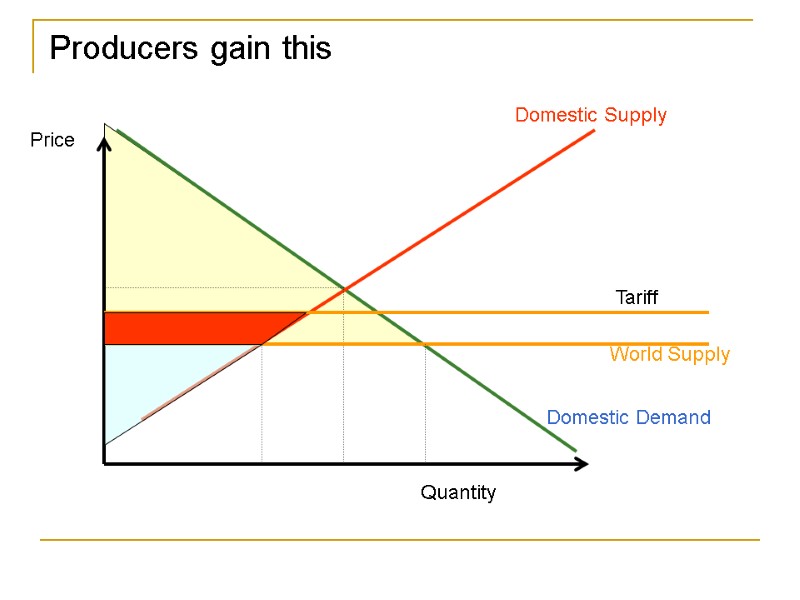
Producers gain this Domestic Supply Domestic Demand Quantity Price World Supply Tariff
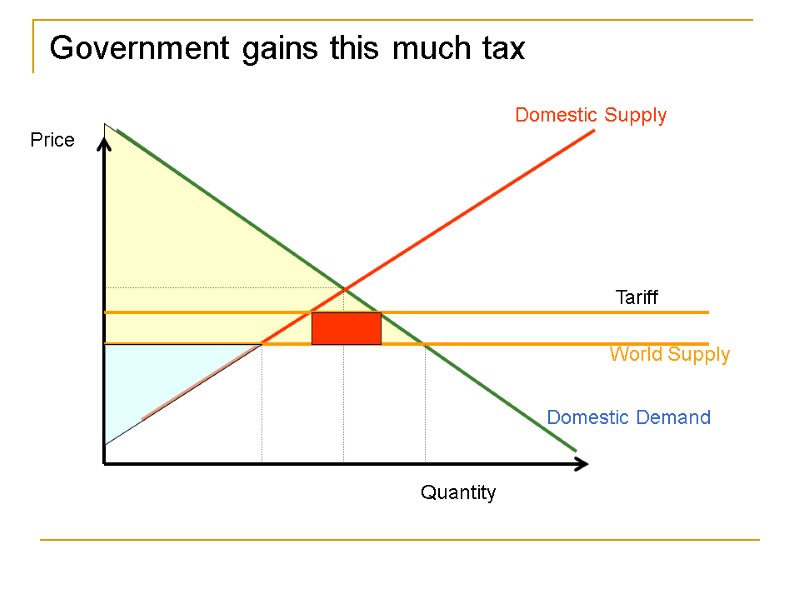
Government gains this much tax Domestic Supply Domestic Demand Quantity Price World Supply Tariff
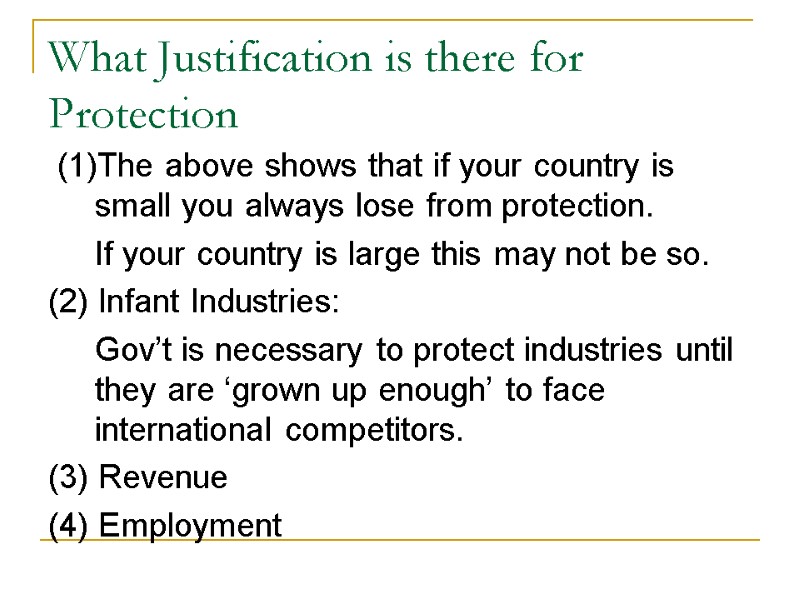
What Justification is there for Protection (1)The above shows that if your country is small you always lose from protection. If your country is large this may not be so. (2) Infant Industries: Gov’t is necessary to protect industries until they are ‘grown up enough’ to face international competitors. (3) Revenue (4) Employment
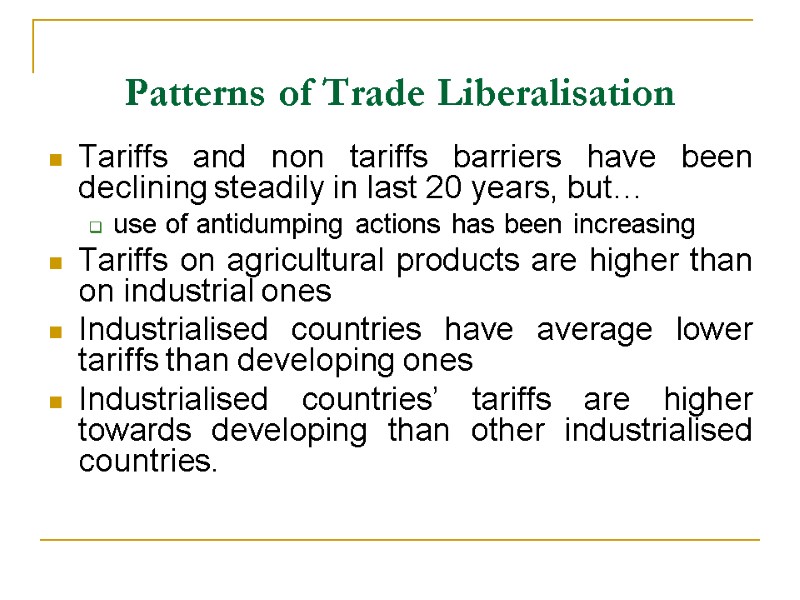
Patterns of Trade Liberalisation Tariffs and non tariffs barriers have been declining steadily in last 20 years, but… use of antidumping actions has been increasing Tariffs on agricultural products are higher than on industrial ones Industrialised countries have average lower tariffs than developing ones Industrialised countries’ tariffs are higher towards developing than other industrialised countries.
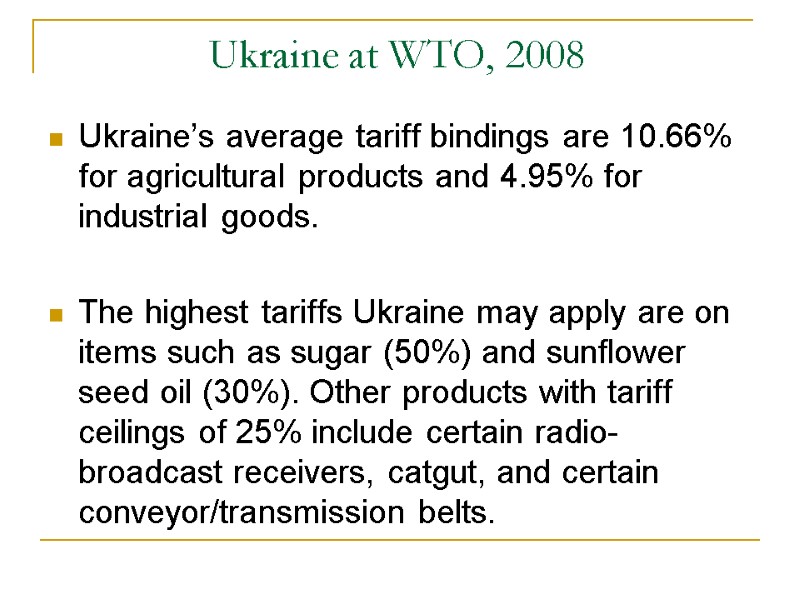
Ukraine at WTO, 2008 Ukraine’s average tariff bindings are 10.66% for agricultural products and 4.95% for industrial goods. The highest tariffs Ukraine may apply are on items such as sugar (50%) and sunflower seed oil (30%). Other products with tariff ceilings of 25% include certain radio-broadcast receivers, catgut, and certain conveyor/transmission belts.
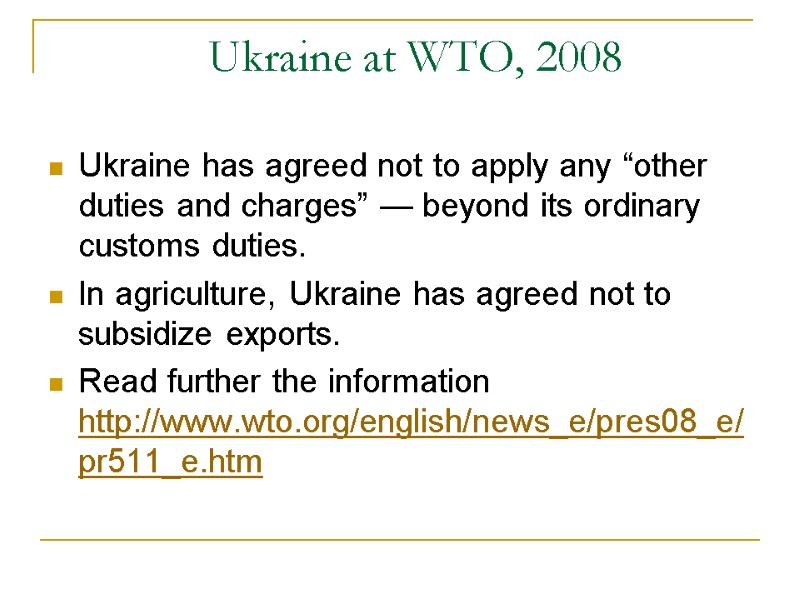
Ukraine at WTO, 2008 Ukraine has agreed not to apply any “other duties and charges” — beyond its ordinary customs duties. In agriculture, Ukraine has agreed not to subsidize exports. Read further the information http://www.wto.org/english/news_e/pres08_e/pr511_e.htm .
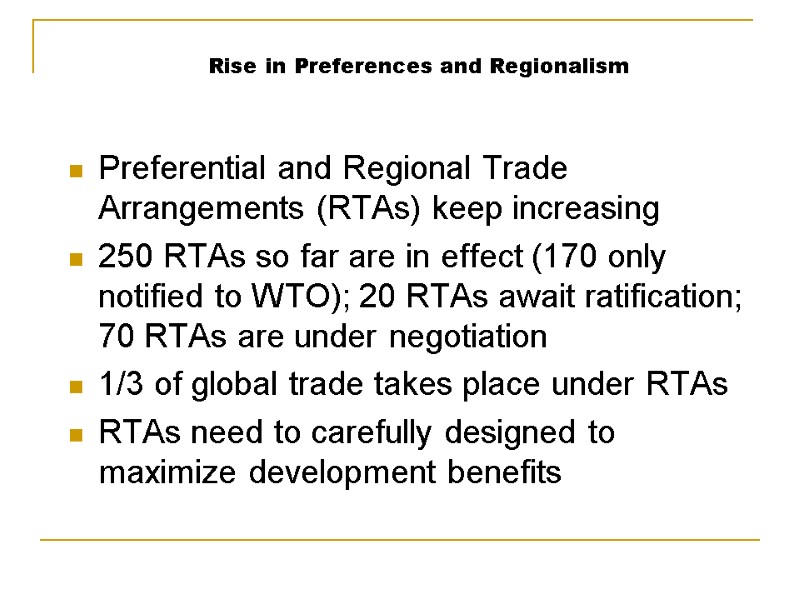
Rise in Preferences and Regionalism Preferential and Regional Trade Arrangements (RTAs) keep increasing 250 RTAs so far are in effect (170 only notified to WTO); 20 RTAs await ratification; 70 RTAs are under negotiation 1/3 of global trade takes place under RTAs RTAs need to carefully designed to maximize development benefits
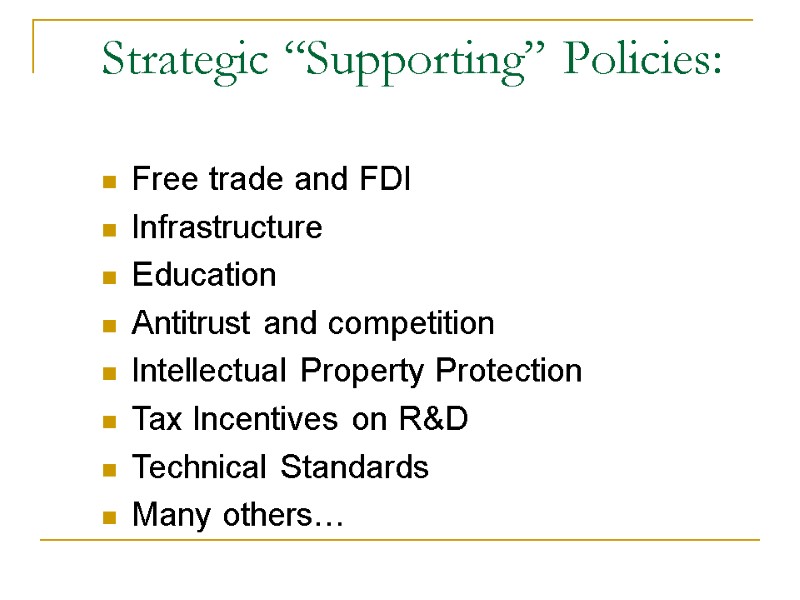
Strategic “Supporting” Policies: Free trade and FDI Infrastructure Education Antitrust and competition Intellectual Property Protection Tax Incentives on R&D Technical Standards Many others…
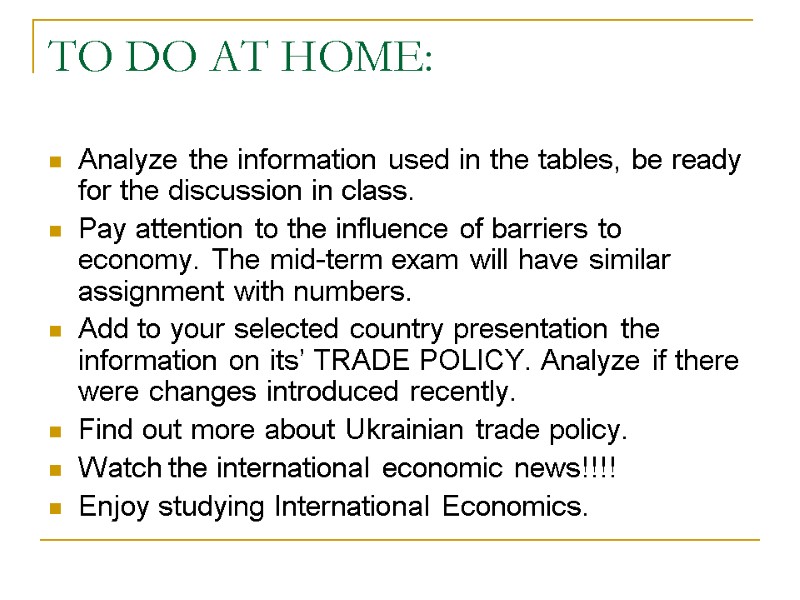
TO DO AT HOME: Analyze the information used in the tables, be ready for the discussion in class. Pay attention to the influence of barriers to economy. The mid-term exam will have similar assignment with numbers. Add to your selected country presentation the information on its’ TRADE POLICY. Analyze if there were changes introduced recently. Find out more about Ukrainian trade policy. Watch the international economic news!!!! Enjoy studying International Economics.
14272-ier_topic_3.ppt
- Количество слайдов: 35

